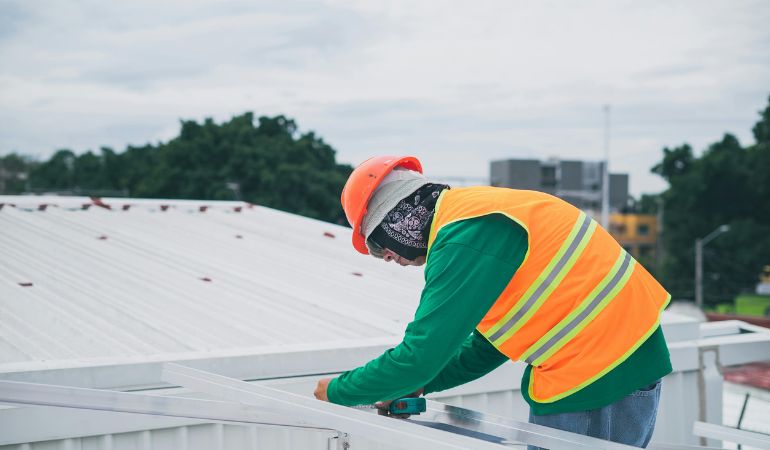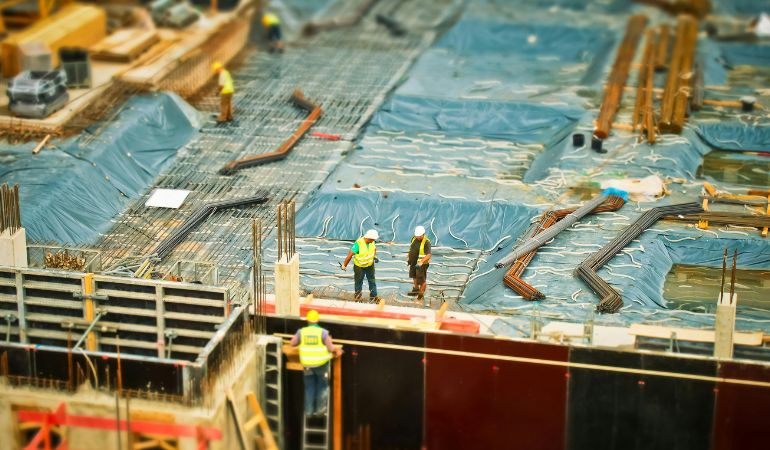Roofs sound boring, right? Shingles, nails, maybe some tar if you’re unlucky. But here’s the thing—stand around a roofing job today, and you’ll realize it’s nothing like your granddad’s version of the trade. There’s tech, new materials, and customers who Google everything before they even pick up the phone.
So yeah, “roofing industry trends” isn’t just marketing fluff. It’s the stuff shaping how homes look, how much energy they use, and honestly, how much people spend fixing storm damage every other year.
What Are The Key Roofing Industry Trends Of 2025?

The key trends in the roofing industry include the adoption of energy-efficient and sustainable materials, such as solar and metal roofing, the demand for personalized, aesthetically appealing designs, and the use of durable, lightweight materials.
Moreover, an increasing number of people are becoming fans of smart roofing, which incorporates the use of IoT sensors and utilizes AI for maintenance. Additionally, there is a growing need for technologies such as AI-driven drones and 3D printing for predictive maintenance and inspections.
Also, roofing companies are prioritizing the use of AI not only in the development stage but also in the marketing stage. If you are located in the United States, I recommend checking your Cleveland roofing companies to meet your roofing-related needs.
Having said that. I’ve managed to highlight the key roofing industry trends of 2025—the ones that will transform the industry over the next decade. So, without wasting time, let’s check these out:
1. Green Is The New Normal:
Not long ago, an eco-friendly roof was a relatively niche product. A recycled shingle here or there, or some clay tiles if you’re feeling fancy. Now? It’s one of the first questions people ask.
Why? Two reasons: energy bills and conscience. Nobody wants to replace a roof every 12 years if a metal one lasts 40. And hey, if it keeps a few tons of waste out of a landfill, even better.
2. Solar Roofs That Don’t Look Ugly:
Remember those bulky panels that stuck out like sore thumbs? Well, they’re not totally gone, but solar shingles are sliding in. They blend in, they actually look like part of the roof, and—bonus—they knock down electricity bills.
It’s not just tech junkies either. Regular homeowners are saying, “If my roof’s going to sit there anyway, it might as well make me some money back.” Hard to argue with that.
3. Tech Is Everywhere (Even Up On The Roof):
This one surprises people. Roofing isn’t just ladders and nail guns anymore. Contractors are using drones, apps, and even AI tools.
A) Drones Doing The Dirty Work
Instead of risking their necks measuring a steep roof, roofers just send up a drone. Ten minutes later, they’ve got high-res photos and exact measurements. Safer, quicker, way less hassle.
B) Software Is Running The Show:
Quotes, scheduling, progress updates—there’s software for all of it now. Some even predict when a roof is likely to fail based on age and weather data. Kind of wild when you think about it.
4. Roofs That Keep The Heat (Or Cool) In Check:
Energy efficiency used to be about windows and doors. Now the roof’s right in the spotlight.
A) Cool Roofs in Hot Places:
In sunny states, reflective “cool roofs” are gaining significant attention. They bounce sunlight away so the house doesn’t turn into an oven. Less AC, lower bills—it’s a no-brainer.
B) Attic And Ventilation Upgrades:
Roofers are also selling more add-ons, such as insulation and ventilation fixes. It might sound boring, but those little extras can add years to a roof and save cash down the line.
5. Materials That Don’t Quit:
No one enjoys the phone call where the roofer says, “Yeah, you’re due for another full replacement.” That’s why longer-lasting materials are getting more love.
A) Metal Is Having A Moment:
Metal roofs are hot—literally sometimes, but mostly in popularity. They’re durable, fire-resistant, and not just for barns anymore. Manufacturers are making them look sleek enough for suburban homes.
B) Synthetic Shingles Stepping In:
Want the look of slate without spending like a millionaire? Synthetic shingles are filling that gap. They’re lighter, cheaper, and trick most people into thinking they’re the real deal.
6. Storms And Insurance Changing The Game:
The weather’s getting nastier, and it’s changing how roofs are built.
A) Stronger Roofs, Fewer Headaches
Impact-resistant shingles, reinforced systems—basically anything that holds up better in hail or heavy winds is selling fast.
B) Insurance Perks
Insurance companies are rewarding people who pick stronger roofs. Lower premiums by investing in durability? That’s an easy yes for most homeowners.
7. The Worker Shortage Nobody Talks About:
Here’s a less glamorous trend: labor. A lot of older pros are retiring, and younger folks aren’t exactly lining up for roofing gigs. It’s hard work, hot work, and not always the most glamorous. Moreover, companies are scrambling to train up apprentices and keep worksites safe. More emphasis on safety, more structured training—it’s the only way to fill the gap.
8. Homeowners Want More Than Just a Roof:
Another shift: people don’t just buy a roof anymore—they want the whole package. Updates, clear communication, quick answers.
A) Digital Check-Ins:
Texts, emails, even job-tracking apps. Customers appreciate knowing what’s happening without having to chase someone down. Contractors who get this right? They usually win the bid.
B) Reviews Are King:
A single bad review online can sting worse than a leaky roof. Contractors are extra focused on customer service because one unhappy client can have a lasting impact online for years.
Roofing Industry Trends: What’s The Future?
Some of the “trends” aren’t mainstream yet, but they’re worth watching.
1. Prefab And Robotics:
Prefab panels and even robotic roof installers are being tested. It sounds futuristic, but once costs come down, it could be everywhere.
2. 3D Printing Experiments:
Believe it or not, some companies are tinkering with 3D printing for roofing parts. Imagine printing the piece you need right there on-site instead of waiting weeks.
Roofing Industry Trends: What’s Hot In 2025?
So yeah, roofing in 2025 looks way different from it did in 2005. Greener, smarter, tougher. Some of it’s practical (like longer-lasting materials), some of it’s futuristic (robots, 3D printing), and a lot of it is driven by homeowners who want more value for their money.
If you’re in the business, it’s an exciting—sometimes challenging—time. And if you’re just a homeowner, at least you’ve got more choices than ever before.
Read Also:







